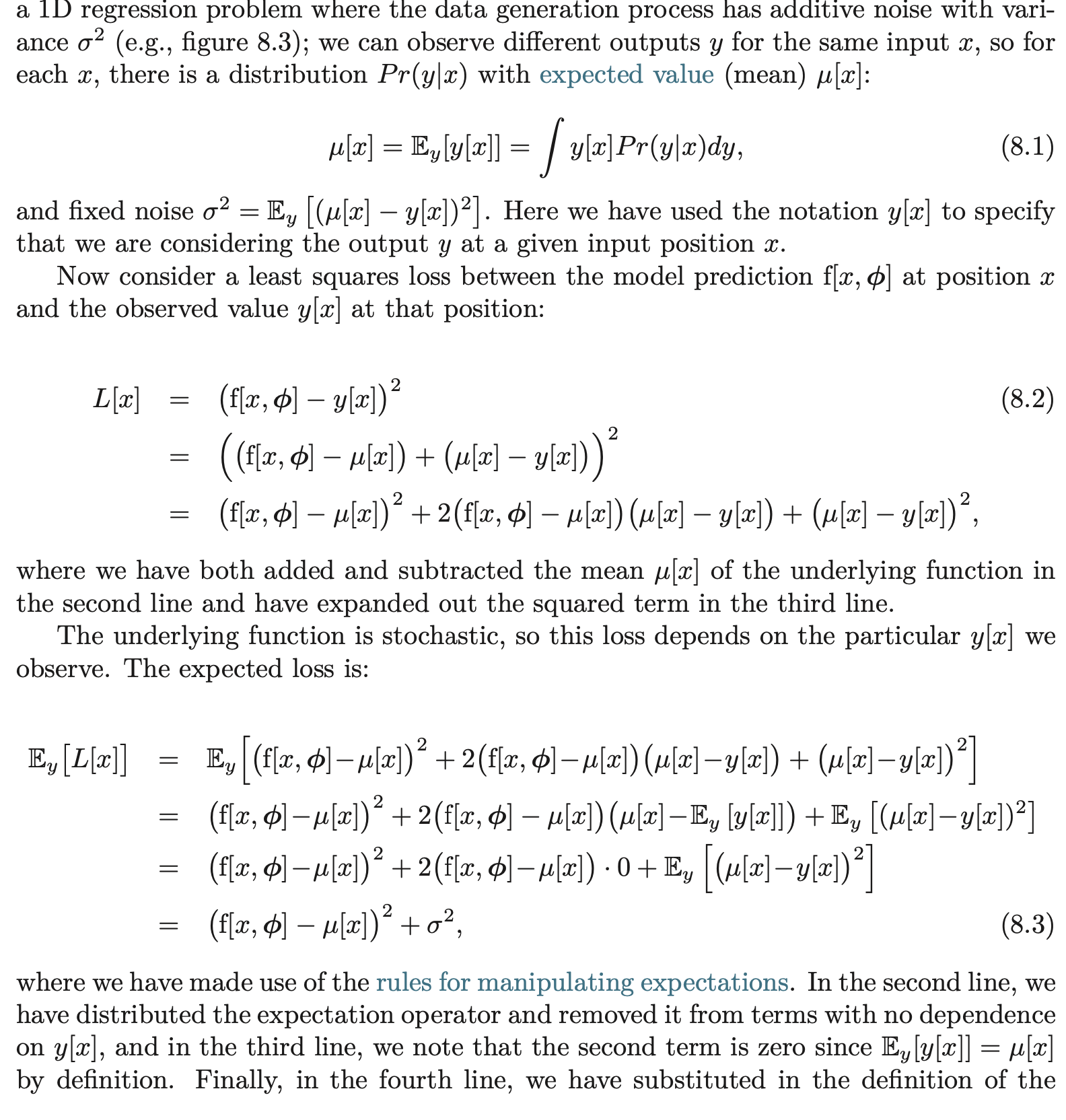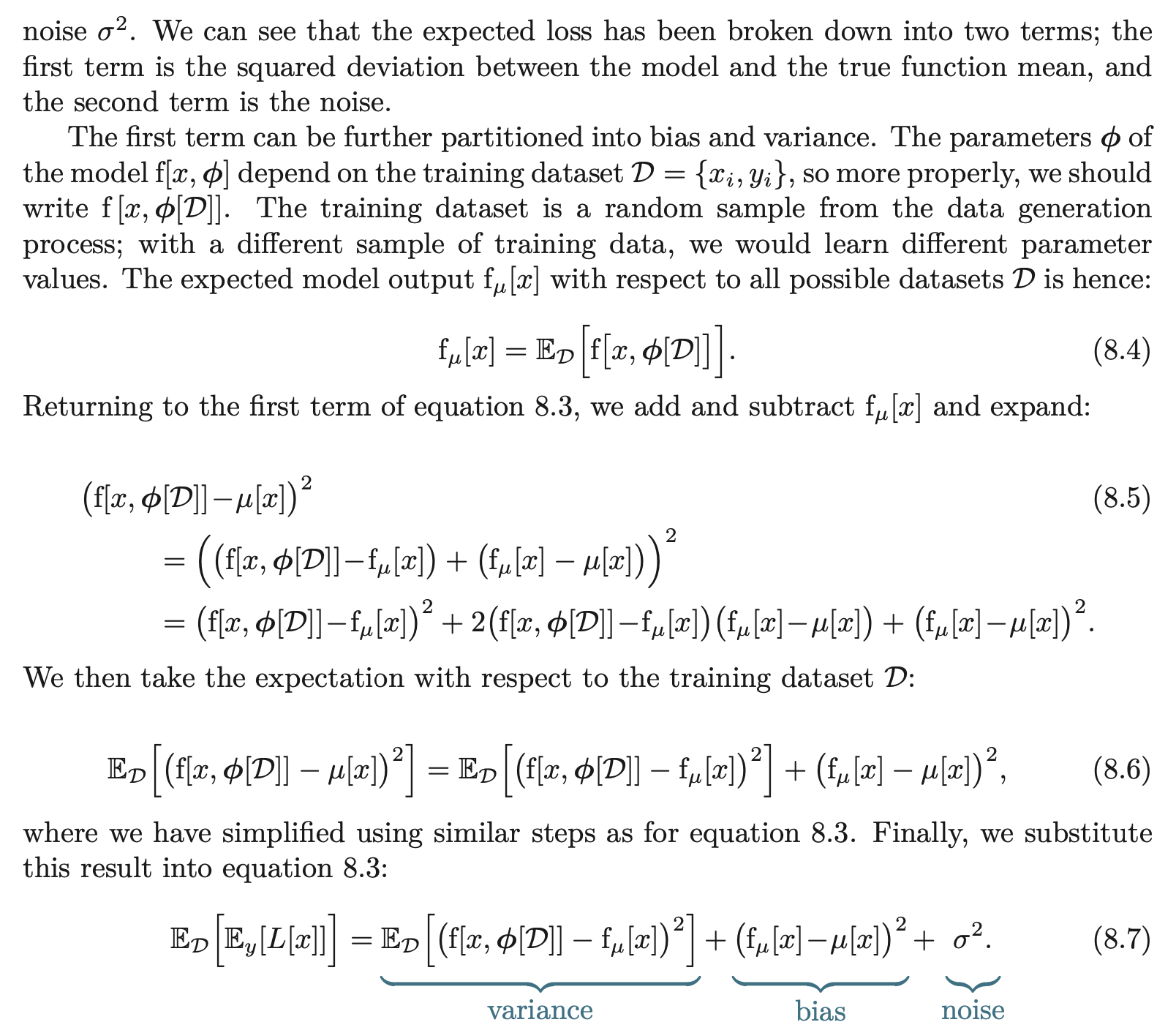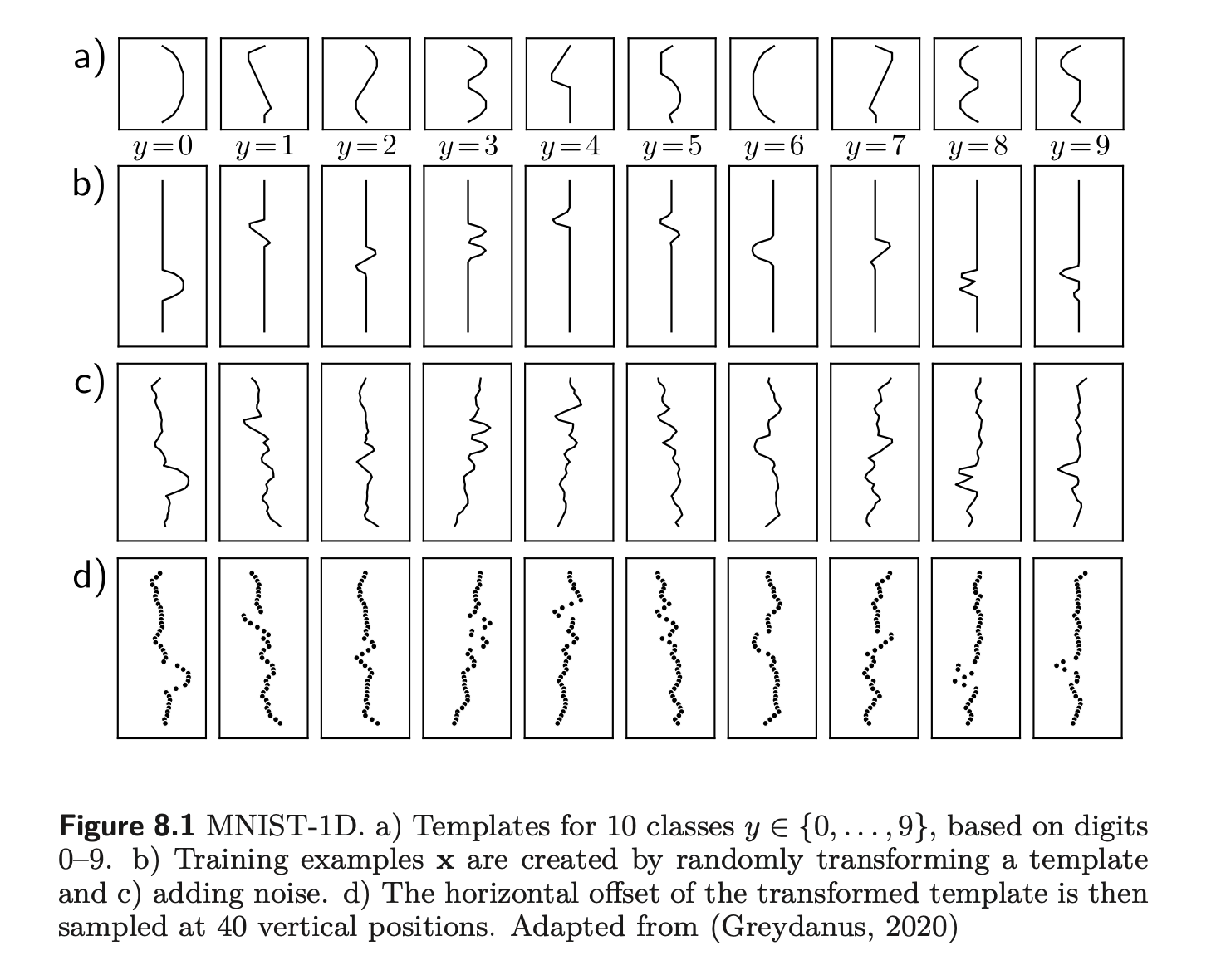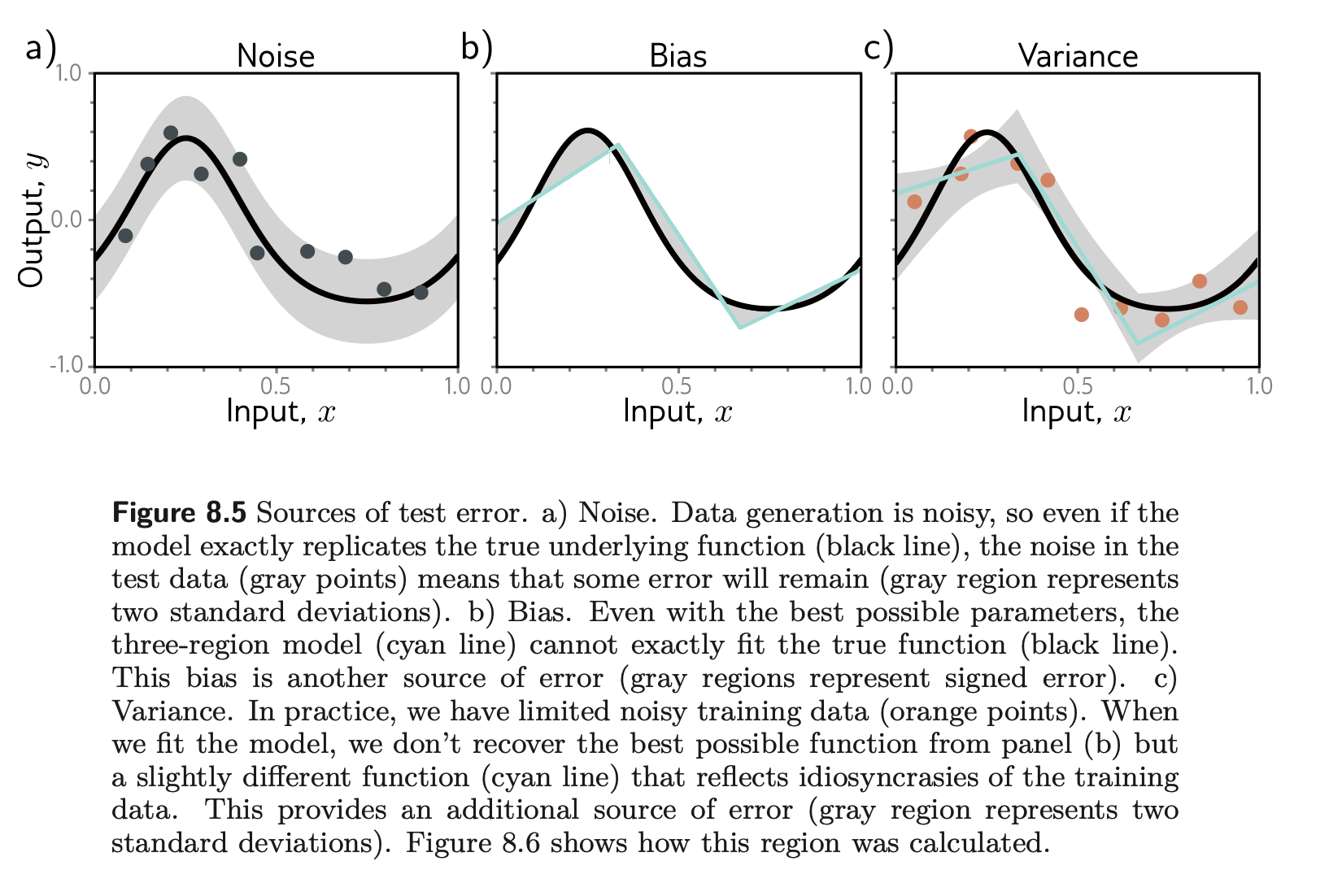Chapter 8 - Measuring Performance
- How well does the model generalize to new data
Training a Simple Model
Noise
- Example instruments and noisy outputs
Bias
- Model is not flexible enough to fit the true function.
- “Fix” : More capacity
Variance
- When we fit a model, we do not get the closest possible approximation to the true underlying function
- “Fix” : More training data
- Bias Variance Dilemma
- Bias measures how strongly the avg result deviates from optimal value
- Variance measures how strongly the results vary around the expected value
- When flexibility is too low → bias dominates(too good in train and horrible later) and underfits
- When flexibility is too high → variance dominates → overfitting
Skeptic : Examples of noise and how to tackle it in some more real life examples. Not just the ML way : Noise Suppression
Test Error
- Consider a 1D regression problem where the data generation process has additive noise with variance


- This equation says that the expected loss after considering the uncertainty in the training data D and the test data y consists of three additive components.
- The variance is uncertainty in the fitted model due to the particular training dataset we sample.
- The bias is the systematic deviation of the model from the mean of the function we are modeling.
- The noise is the inherent uncertainty in the true mapping from input to output.
Double Descent
regularize , Regularization
Skeptic : How does this connect with optimizers Skeptic: Visualize loss landscape for double descent Skeptic: More about hyperparameter tuning

